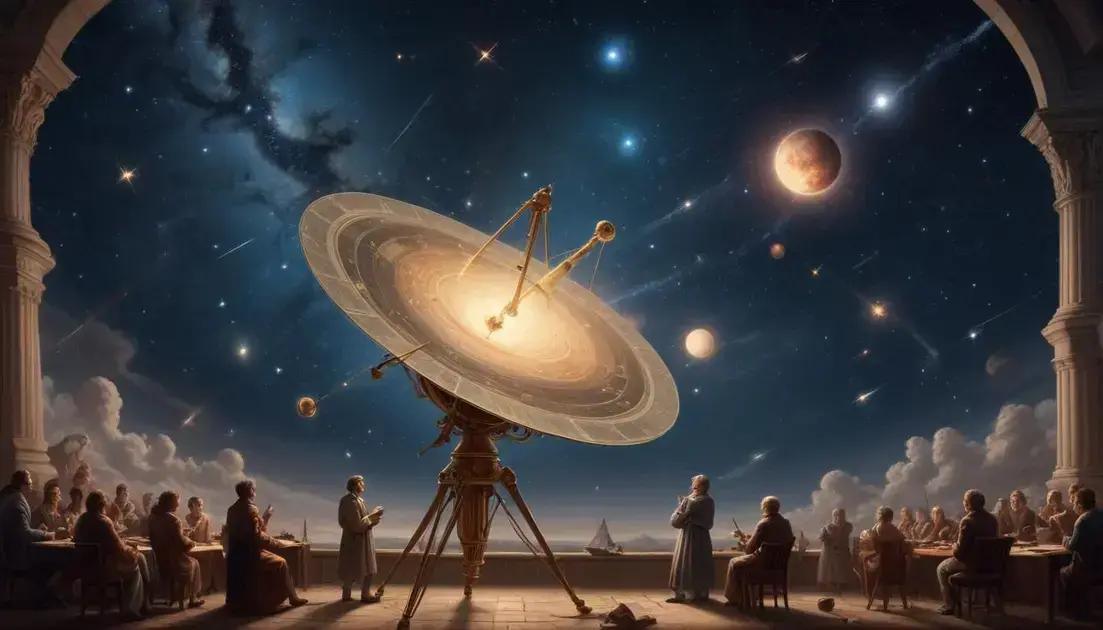
The Scientific Revolution: Heliocentrism, Method and New Paradigms
The Scientific Revolution fundamentally transformed our understanding of science and the universe. Pioneers like Copernicus, Kepler, and Newton challenged traditional views, emphasizing observation and experimentation. This era established the foundations of modern science and influenced critical thinking and philosophy, leading to advancements that continue to impact technology and society today.
The Scientific Revolution changed everything we thought we knew about the universe. Curious thinkers like Copernicus and Newton opened our eyes to new possibilities. Ready to dive into their world?
The Role of Copernicus in Heliocentrism
Nicolas Copernicus was a key figure in the Scientific Revolution. His ideas changed how we see our place in the universe. Before him, people believed that Earth was the center of everything. He challenged this view with a bold new idea: the sun is at the center, and Earth moves around it.
What Did Copernicus Propose?
In his famous book, De revolutionibus orbium coelestium, Copernicus laid out his heliocentric theory. This meant that the planets, including Earth, revolved around the sun. His model was simple yet powerful, changing astronomy forever.
Why Was This Important?
Copernicus’s theory was groundbreaking. It offered a clearer and more accurate way to understand celestial movements. This shift helped others like Kepler and Galileo build upon his ideas. They expanded the heliocentric model, leading to significant discoveries.
Challenging Tradition
Not everyone accepted Copernicus’s ideas quickly. Many clung to the geocentric model, which placed Earth at the center. Copernicus faced criticism from religious leaders and scholars. But over time, evidence from observations supported his work, leading to wider acceptance.
Legacy of Copernicus
Today, we remember Copernicus as a founder of modern astronomy. His willingness to question established beliefs paved the way for scientific inquiry. This legacy continues to inspire scientists around the world.
Kepler’s Laws of Planetary Motion
Johannes Kepler made important contributions to astronomy. His laws of planetary motion helped explain how planets move around the sun. Before him, many accepted the idea of circular orbits. Kepler changed this view with his groundbreaking discoveries.
First Law: Elliptical Orbits
Kepler’s first law states that planets move in ellipses, not perfect circles. An ellipse is a stretched circle. This means the distance from the sun to a planet changes over time. When a planet is closer to the sun, it moves faster. When it’s farther away, it moves slower.
Second Law: Equal Areas
The second law explains how planets cover equal areas in equal times. This means that a planet moves faster when it’s closer to the sun. It takes longer to travel when it’s farther away. This helps us understand the speeds of planets in their orbits.
Third Law: Harmonies of the Spheres
Kepler’s third law relates a planet’s distance from the sun to its orbital period. The farther away a planet is, the longer it takes to orbit the sun. This relationship is simple: if you know a planet’s distance, you can find out how long it takes to complete one orbit.
Impact of Kepler’s Work
Kepler’s laws changed how we view the universe. They provided a foundation for future scientists like Newton. Newton built on Kepler’s work to create his laws of motion and gravitation.
Newton’s Contributions to Science
Sir Isaac Newton made major contributions to science during the Scientific Revolution. His work changed how we understand physics and mathematics. Newton formulated key laws that explain motion and gravity.
Newton’s Laws of Motion
Newton’s first law states that an object at rest stays at rest until a force acts on it. This means things don’t move unless pushed or pulled. His second law relates force, mass, and acceleration. The more force you apply, the faster something will move.
The Law of Universal Gravitation
Newton is also famous for the law of universal gravitation. This law explains that every object attracts every other object with a force. The strength of this force depends on their masses and the distance between them. This idea helped us understand why planets orbit the sun.
Mathematics and Calculus
In addition to physics, Newton made big advances in mathematics. He developed calculus, which tricks us into understanding change. Calculus helps scientists and engineers solve complex problems related to motion, areas, and curves.
Impact on Science and Society
Newton’s findings laid the groundwork for modern physics and astronomy. His work influenced many scientists who followed him, like Einstein. Newton’s ideas also affected how we view the world and our place in it.
Impact on Philosophy and Methodology
The Scientific Revolution didn’t just change science; it also transformed philosophy and methodology. Thinkers began to question long-held beliefs and embraced new ways of thinking. This led to the rise of modern philosophy.
Shift from Authority to Empiricism
Before the Scientific Revolution, many accepted ideas based on tradition and authority. Scientists and philosophers now advocated for empirical evidence instead. They believed knowledge should come from observation and experimentation, not just from ancient texts.
Development of the Scientific Method
The Scientific Method grew during this time. This process involves asking questions, forming hypotheses, conducting experiments, and analyzing results. It provides a structured approach to understanding the world around us. Scientists like Francis Bacon emphasized the importance of this method.
Philosophical Changes
Philosophers began to explore the nature of knowledge and existence. René Descartes questioned everything and famously said, “I think, therefore I am.” His ideas encouraged critical thinking and skepticism, fueling debates about reality and perception.
Legacy of the Revolution
The impact on philosophy and methodology shaped Western thought. The emphasis on reason and evidence laid the foundation for modern science and continues to influence how we think today. The Scientific Revolution changed not just what we know but how we know it.
Legacy of the Scientific Revolution
The Scientific Revolution left a lasting legacy that continues to shape our world. It changed how we view science, knowledge, and our place in the universe. This period marked the beginning of modern science and critical thinking.
Foundation for Modern Science
The methods developed during the Scientific Revolution are still used today. The emphasis on observation and experimentation laid the groundwork for many scientific disciplines. Physics, chemistry, and biology owe much to this transformative time.
Influence on Technology
The ideas from this era sparked advancements in technology. Innovations in navigation, medicine, and engineering greatly improved human life. The principles of science made it possible to create machines and tools that changed everyday life.
Intellectual Movements
The Scientific Revolution also inspired the Enlightenment. Thinkers like Voltaire and Rousseau built on these ideas, pushing for reason and individual rights. This movement encouraged people to think for themselves and question authority.
Impact on Society
The legacy goes beyond science and technology. It fostered a culture of inquiry and skepticism. People started to seek evidence and rely on facts rather than tradition. This shift continues to influence education, politics, and philosophy.
Conclusion
In conclusion, the Scientific Revolution marked a significant turning point in history. It changed how we think about science and our understanding of the universe. Through the work of pioneers like Copernicus, Kepler, and Newton, we gained valuable insights into nature and the laws that govern it.
Moreover, the legacy of this revolution continues to influence our lives today. It laid the foundations for modern science, technology, and philosophy. By valuing evidence and questioning assumptions, we create a society that embraces knowledge and critical thinking. This spirit of inquiry is essential for continued progress and innovation. Ultimately, the Scientific Revolution shows us the power of curiosity and the importance of seeking truth in our world.


